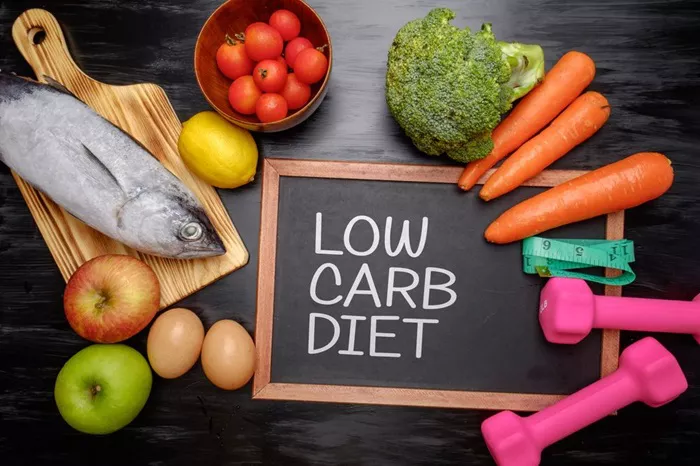Cardiovascular exercise, often referred to as “cardio,” is one of the most effective ways to improve overall health. For many, the idea of engaging in intense, long workout sessions can feel daunting. However, thirty minutes of cardiovascular exercise is all it takes to see significant benefits, whether you’re trying to lose weight, improve heart health, or boost your mood. In this article, we will explore the various benefits of thirty minutes of cardiovascular exercise, how to get started, and how to maximize its effectiveness.
No matter your fitness level, incorporating this simple yet powerful habit into your routine can lead to lasting improvements in both physical and mental well-being. The idea that just half an hour can make a difference may seem too good to be true, but the science behind cardiovascular exercise proves otherwise.
The Science Behind Cardiovascular Exercise
Before diving into the specific benefits of thirty minutes of cardio, it’s important to understand why cardiovascular exercise is so effective. Cardiovascular exercise gets its name because it strengthens the heart and lungs, enhancing the body’s ability to deliver oxygen to muscles and organs. This improvement in circulation and oxygen efficiency contributes to better overall health and performance.
When you engage in a cardio workout, your heart rate increases, causing your heart to pump more blood and oxygen to the muscles and tissues throughout the body. This process enhances cardiovascular endurance and lowers the risk of heart disease. Cardiovascular exercise can be done through various activities such as walking, running, cycling, swimming, and even dancing.
Despite the short duration, 30 minutes of moderate-intensity cardiovascular exercise can have a profound impact on your fitness. It activates several processes within the body that work together to promote health, including weight management, reduced stress, and improved metabolic function.
Weight Management and Fat Burning
One of the most popular reasons for engaging in cardiovascular exercise is weight management. Thirty minutes of cardio is sufficient for burning a significant number of calories, depending on the intensity and type of exercise performed. Whether it’s a brisk walk, a jog, or cycling, engaging in regular cardio helps promote fat burning and improves metabolism.
During cardio, the body uses stored fat as fuel, which leads to fat loss when done consistently. This is particularly effective for those looking to lose weight or maintain a healthy weight. The more intense the workout, the more calories you will burn, but even low-impact cardio activities like walking can contribute to weight management when performed regularly.
In addition, cardiovascular exercise has a lasting impact on the metabolism. After a cardio workout, the body continues to burn calories at an elevated rate for hours, a phenomenon known as “afterburn.” The combination of calorie-burning during the workout and afterburn can make 30 minutes of cardio a highly effective strategy for weight loss.
Cardiovascular Health and Longevity
One of the most significant benefits of cardiovascular exercise is the improvement in heart health. The heart is a muscle, and like any other muscle, it becomes stronger when used regularly. By engaging in cardiovascular exercise for just thirty minutes a day, you can reduce the risk of heart disease, high blood pressure, and stroke.
Exercise helps reduce the levels of bad cholesterol (LDL) in the bloodstream while increasing the levels of good cholesterol (HDL). This balance is crucial for maintaining healthy arteries and blood vessels. In addition, cardio helps to improve circulation, ensuring that oxygen-rich blood reaches all organs and tissues, thereby reducing the risk of developing cardiovascular diseases.
Moreover, regular cardiovascular exercise can lower blood pressure. When you engage in consistent exercise, the heart becomes more efficient at pumping blood, reducing the workload and stress on the heart. This leads to lower blood pressure over time, which is essential for preventing heart disease.
Mental Health Benefits of Cardiovascular Exercise
Exercise isn’t just great for the body—it’s also highly beneficial for mental health. Thirty minutes of cardiovascular exercise is a powerful tool for improving mood and reducing symptoms of anxiety and depression. During exercise, the brain releases endorphins, which are natural mood enhancers. These endorphins can create a “runner’s high,” a feeling of euphoria that can last long after the workout is over.
In addition to boosting mood, cardiovascular exercise helps reduce stress levels. It has been shown to lower the production of cortisol, the body’s stress hormone. The rhythmic nature of cardio exercises, such as running or cycling, has a meditative effect that can calm the mind and help people manage daily stresses more effectively.
Furthermore, cardio exercises help with the regulation of sleep patterns. Engaging in moderate-intensity exercise can help you fall asleep faster, experience deeper sleep, and wake up feeling more rested. Proper sleep is essential for mental clarity, improved concentration, and overall well-being.
Increased Energy Levels
It may seem counterintuitive that physical exertion could lead to more energy, but thirty minutes of cardiovascular exercise can have the opposite effect. Initially, you might feel tired after a workout, but regular exercise increases stamina and energy levels over time.
Cardio workouts stimulate the production of mitochondria, which are the energy-producing components in cells. With more mitochondria in the muscles, the body becomes more efficient at converting food into energy. This increased energy production translates to higher endurance levels and greater overall vitality.
Additionally, regular cardio improves circulation, delivering oxygen and nutrients to muscles and tissues more efficiently. As a result, your body will have more energy to perform everyday tasks, and you may feel less fatigued throughout the day.
Improved Muscle Tone and Endurance
While cardiovascular exercise is primarily known for improving heart health and burning fat, it also contributes to muscle endurance and tone. While it may not build muscle as effectively as strength training, regular cardio can still enhance muscular endurance, making daily activities and other forms of exercise easier.
When performing cardiovascular exercises, the body recruits various muscles, including those in the legs, core, and upper body (depending on the activity). Activities like cycling, swimming, and rowing engage multiple muscle groups, leading to improved muscle strength and endurance.
By increasing your cardiovascular endurance through consistent exercise, you will be able to perform both aerobic and anaerobic activities for longer periods, which is particularly beneficial for athletes or anyone looking to improve their fitness levels across multiple areas.
Flexibility and Mobility
Engaging in cardiovascular exercise can also improve flexibility and joint mobility. The movements involved in many cardio exercises, such as cycling and swimming, require a wide range of motion. Over time, this can help improve flexibility, particularly in the hips, knees, and ankles.
Moreover, cardio exercises often involve dynamic movements that promote joint mobility. For instance, running or brisk walking requires coordination and fluid motion between the upper and lower body, which helps keep joints limber and reduces the risk of stiffness.
Regular cardio workouts can also improve posture by strengthening the muscles responsible for maintaining balance and alignment. Good posture is essential for overall health, as it helps prevent back pain, muscle tension, and other physical discomforts.
Enhanced Immune System Function
Another key benefit of thirty minutes of cardiovascular exercise is its ability to enhance immune system function. Moderate-intensity cardio exercises have been shown to stimulate the production of white blood cells, which are responsible for fighting off infections and illnesses.
Regular cardio also helps reduce inflammation in the body. Chronic inflammation is linked to a variety of health issues, including autoimmune diseases, heart disease, and diabetes. By regularly engaging in cardiovascular exercise, you can reduce systemic inflammation and support overall health.
Cardiovascular Exercise for Different Fitness Levels
One of the best things about cardiovascular exercise is its adaptability. Whether you’re a beginner or an advanced athlete, thirty minutes of cardio can be tailored to meet your needs. For beginners, light activities such as walking, swimming, or cycling can provide significant benefits without overwhelming the body. As fitness improves, intensity can be gradually increased by adding sprints, intervals, or more challenging activities.
For advanced athletes, more intense forms of cardio, such as high-intensity interval training (HIIT), can be incorporated into the routine to further enhance cardiovascular fitness and endurance. The key is consistency—whether you’re just starting or are already an experienced athlete, the benefits of thirty minutes of cardio will accumulate over time.
Conclusion
Thirty minutes of cardiovascular exercise is a simple yet effective way to improve physical health, mental well-being, and overall fitness. From weight loss and improved cardiovascular health to enhanced energy levels and better mood, the benefits are vast. By making cardiovascular exercise a regular part of your routine, you can experience long-term health improvements that positively impact every aspect of your life. So, get moving—whether it’s walking, cycling, or running, 30 minutes of cardio is all it takes to start feeling the difference.
Related Topics

































